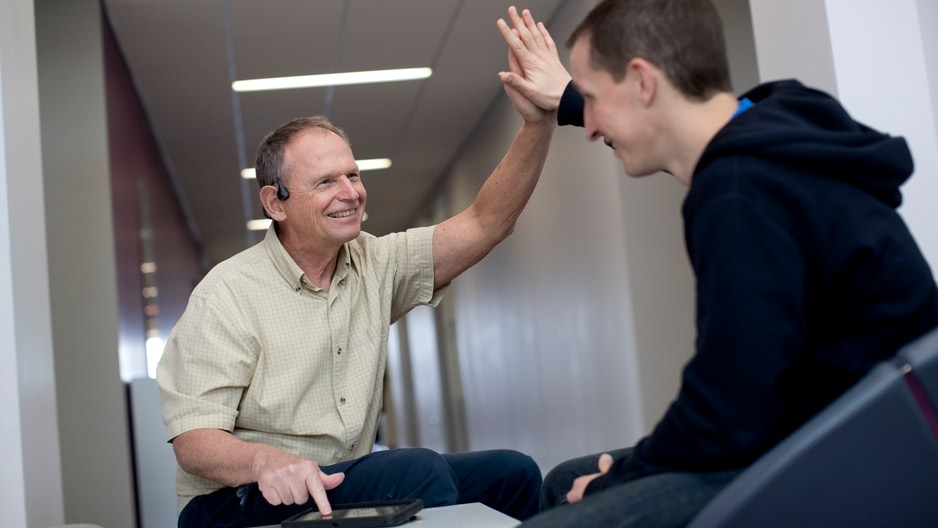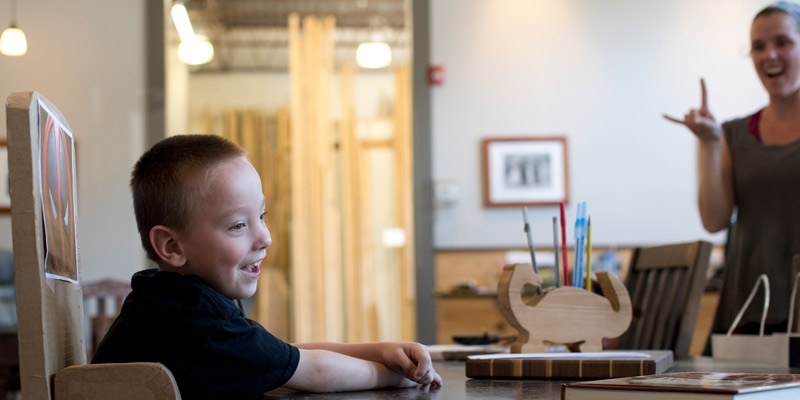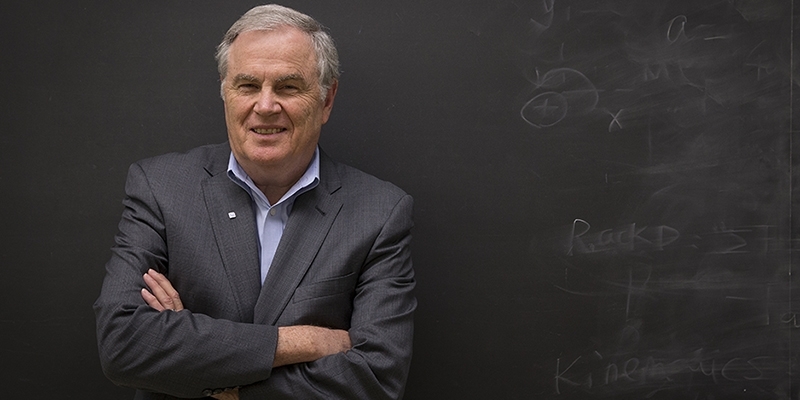Posted October 24, 2017
Temple technology advances autism therapy
The tool also holds potential for brain injury and intellectual disability therapies.

Photography By:
Ryan S. Brandenberg
Professor of Computer and Information Sciences John Nosek (left) demonstrates his GAINS software with a student. Nosek has been working for a decade to develop technology to improve therapies for people with autism.
As an innovator, John Nosek is driven by the desire to help children born with developmental delays. It’s because he knows what’s possible with early intervention.
That desire has fortified the Temple University professor of computer and information sciences in a 10-year quest to develop technology to improve the efficacy and availability of treatment for autism. The disorder affects approximately 75 million people, or 1 percent of the world’s population.
More than half of individuals with severe developmental challenges due to autism can benefit from behavior-based therapy called Applied Behavior Analysis, or ABA. When a child with autism undergoes quality ABA treatment early in life, it can mean significant progress and higher likelihood of success in a mainstream classroom.
For it to be most effective, the labor-intensive process must be consistent and must build on previous successes. To date, this has been difficult to achieve, because ABA for autism has been paper-based and solely human-dependent. Plus, high turnover among ABA therapists is prevalent, so children often work with multiple people of varying experience levels.
Nosek and his colleagues are trying to tackle these roadblocks through GAINS, the Guidance Assessment and Information System. He has developed the software platform with input from Temple faculty members Don Hantula and Matt Tincani, who are experts in ABA. GAINS incorporates knowledge of the ABA process, the instructor and the student to provide real-time process and decision support for instructors. Slobodan Vucetic of computer and information sciences and his team are data mining the high-quality data captured by GAINS to customize therapy and improve success rates.
How ABA works
Children with autism require a lot of practice and repetition to build basic skills, explains Matt Tincani, associate professor of education. At the same time, they crave consistency and structure.
In ABA, a therapist works with a child one-on-one several times a week to build or reduce behaviors in order to promote life and social skills such as listening, playing, talking and brushing teeth.
“The repeated practice delivered through ABA really makes a difference for kids, but it has to be done consistently,” he said.
Say, for example, a child is learning colors. One day a therapist holds up a green card and asks the child, “What do you see?” If on the next day, a different therapist conducts the same exercise but asks, “What color is this?” the inconsistency can throw the child off.
How GAINS works
GAINS acts as a virtual assistant for the ABA therapist, easing data collection and guiding therapy decisions. So instead of having to look back through voluminous binders of paper to see where a child is in their progress or try to pick up on where another therapist left off, GAINS will tell the therapist what skill to work on next and make decisions in real time about the best sequence for the therapy session. So, for example, if there are two therapists working with a child on subsequent days, they’ll know the exact way to word prompts and questions.
“I realized the real problem [with ABA] was a lack of well-qualified instructors to consistently provide therapy,” Nosek said. “I knew I needed to build an agent-based system that guides instructors, including parents and family members, step-by-step to provide quality ABA therapy.”
Findings and funding
After years of testing, including user-experience research at a local autism treatment center that showed a 50 percent increase in performance with GAINS, Nosek’s vision recently became a reality. Earlier this year, GAINS was launched by Guiding Technologies (GT), a Temple spinoff company that is commercializing the technology. Just recently, the National Science Foundation (NSF) awarded an additional $150,000 to integrate GAINS into Individual Education Plan (IEP) software. This brings NSF funding for GAINS to $1.4 million. Ben Franklin Partners, Independence Blue Cross and Safeguard Scientifics have together invested an additional $500,000.
In the future, the researchers hope the technology will mean families can continue the therapy at home, expediting progress for the child. And ultimately, they believe that GAINS will be able to customize therapy according to each child’s specific needs and environment.
It’s been a painstaking process to build this technology, but Nosek has not been deterred.
"The knowledge that children who are born every day with developmental delays will suffer needlessly without a technological innovation such as GAINS—and that I can build it—drives me," Nosek said. "Every child deserves a chance."


